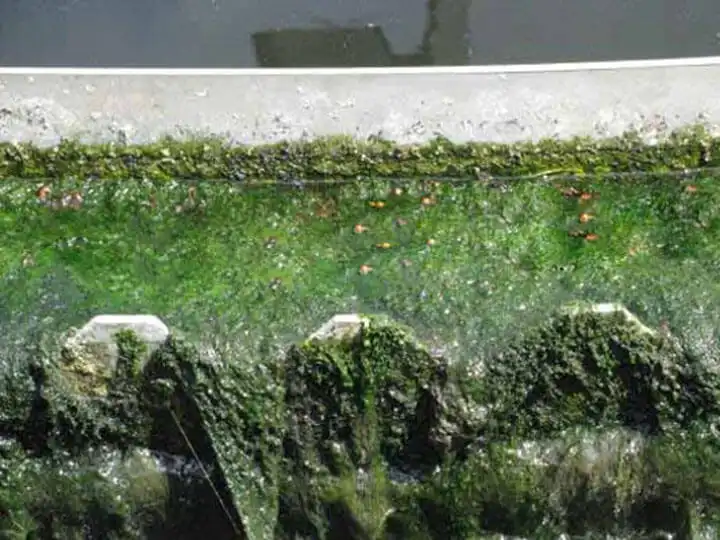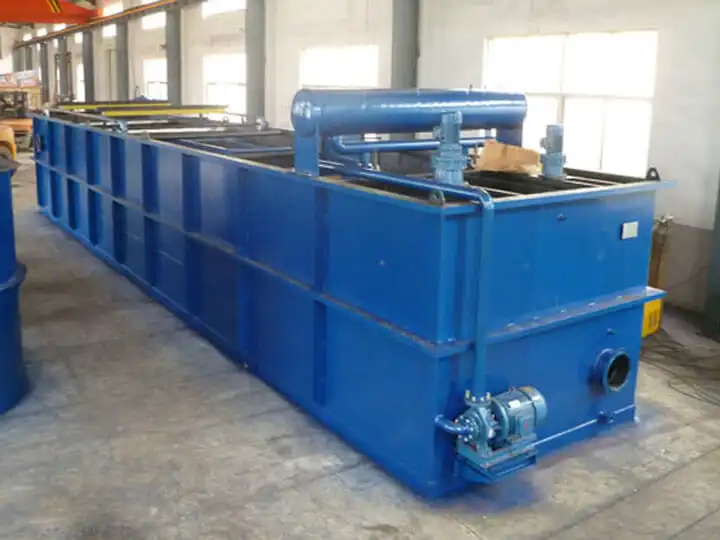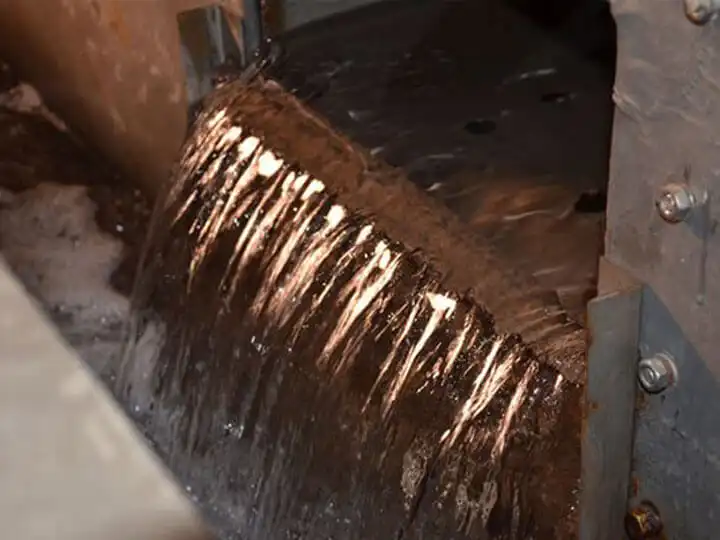In a wastewater treatment plant which use A/O, A/A/O etc. biological treatment technology, generally the Secondary Sedimentation Tank is the last treatment process to purify the water. After the solid-liquid separation of Secondary Sedimentation Tank, the purified water will reach expected standards and then be discharged.
Performance of the Secondary Sedimentation Tank will directly affects the final outlet water quality. For example to domestic sewage water, every increase of 1.0mg/l TSS in the outlet water from Secondary Sedimentation Tank will cause:
BOD Increase: 0.3-1.0mg/l
COD Increase: 0.8-1.4mg/l
TN Increase: 0.08-0.1mg/l
TP Increase: 0.02-0.02mg/l
If you requires the TSS in final outlet water <30mg/l, then the pollutant data caused by TSS is estimated to be:
BOD: 9-30mg/l
COD: 24-42mg/l
TN: 2.4-3mg/l
TP: 0.6-1.2mg/l
Performance of the Secondary Sedimentation Tank is so important, while lots of wastewater treatment operators meets with problems that the sludge floats on surface of Secondary Sedimentation Tank. The sludge should precipitate to tank bottom, WHY DOES THE SLUDGE FLOATS? HOW TO SOLVE THIS PROBLEM?
There are lots of problems causing sludge floating, the reasons generally can be divided into 3 categories.
Category 1: Problem on Secondary Sedimentation Tank Itself
1.1 Denitrification
If Nitrification happens in the previous Aeration Tank, and the water stays too long time in Secondary Sedimentation Tank, Denitrification may happen in Secondary Sedimentation Tank and generate N2. The N2 may float some sludge to water surface.
Solution:
Increase sludge recirculation flow rate, shorten the HRT and control the DO value in the outlet of Aeration Tank, to avoid Anoxic Environment forming in Sedimentation Tank Itself.

1.2 Adhering of Algae
Algae may grow in the overflow weir and water collection launder of Secondary Sedimentation Tank, when water flows through them, the algae may strip off and float on water surface.
Solution:
Regularly clean the overflow weir and water collection launder.

1.3 Break down of Sludge Scraper
For large wastewater treatment plant, generally Bridge Supported Sludge Scraper or Longitudinal Vacuum Sludge Suction Scraper Bridge is installed inside Secondary Sedimentation Tank. If the scraper arm or scraper blade break down, the sludge at tank bottom can't be collected and transferred to sludge tank in time, the sludge in bottom will access into Anoxic or Anaerobic environment.
Solution:
Regularly check the sludge scraper, and repair it in time.

Category 2: Problem on Aeration Tank
2.1 Immature Activated Sludge
To new biological treatment tank, or to the existing biological treatment tank which replaced new activated sludge, the seeding sludge is immature, it will generate fine and suspended floccules, which is not easy to be precipitated.
Solution:
Just wait, give the sludge more time to grow and to be mature.
2.2 Filamentous Bacteria
Filamentous bacteria cause sludge bulking, settleability become very bad, which make the sludge suspended, hard to be precipitated.
Solution:
Control the grow of filamentous bacteria

2.3 Too High MLSS in Aeration Tank
If the MLSS in aeration tank is too high, when the water flows to Secondary Sedimentation Tank, the sludge hopper will be full very fast. The water will disturb the precipitated sludge and drain from Secondary Sedimentation Tank as the treated outlet water together with some sludge.
Solution:
Increase the frequency/times of excess sludge discharging.
2.4 Sludge Aging
If sludge age, the sludge will break up and generate fine particles, it is not easy to be precipitated. Generally reason for sludge aging is : Low load operation and too long sludge age.
Solution:
Adjust the key biological treatment controlling parameters to avoid of sludge aging.
2.5 Too Large Aeration Air Feeding
Too large aeration air feeding will smash activated sludge to fine particles. And the aeration process will make the fine particles suspended. When the water from to Secondary Sedimentation Tank, the fine particles will flow to water outlet together with water.
Solution:
Decrease aeration air feeding
Category 3: Changes on Feeding Water
3.1 Water Feeding Flow Rate Increase
If water feeding flow rate increase, the HRT of all treatment equipment will decrease, the sludge won't have enough time to precipitate to tank body of Secondary Sedimentation Tank.
Solution:
Set an equalization tank to constant water flow in every hour, to avoid sudden increasing of water feeding flow rate.
3.2 Increase of Treatment Load
When pollutants concentration increasing in feeding water, F/M rate increase, activated sludge activity increase, flocculability between activated sludge become bad, thus will generating lots of fine particles.
Solution:
Set an equalization tank to homogenize feeding water quality , and increase MLSS in biological treatment tank.
3.3 Imbalance of Nutrient
If nutrient is imbalance, activated sludge can't grow and breed properly, sludge will age and break up to fine particles.
Solution:
Dose nutrient, to avoid imbalance of nutrient.
3.4 Toxic Substance
If feeding water contains toxic substance, activated sludge will die. Too low water temperature or improper pH also can cause sludge floating.
Solution:
Enhance pretreatment process, and replace poisoned activated sludge.
3.5 Weak Pretreatment Process
If pretreatment process is too weak to remove the suspended solids, causing plenty of suspended solids accessing into biological treatment process, this also will cause sludge floating in Secondary Sedimentation Tank.
Solution:
Enhance pretreatment process, for example adding a Dissolved Air Flotation to remove the most part of suspended solids.


Contact: Eng. Dover
Mobile: +86 17561675721
Whatsapp: +86 17561675721
QQ: 1049235017
Wechat: 1049235017
Email: dover@cnwwtp.com
Addr: Beiling, Machang Vil.
City: Qingdao, China.
